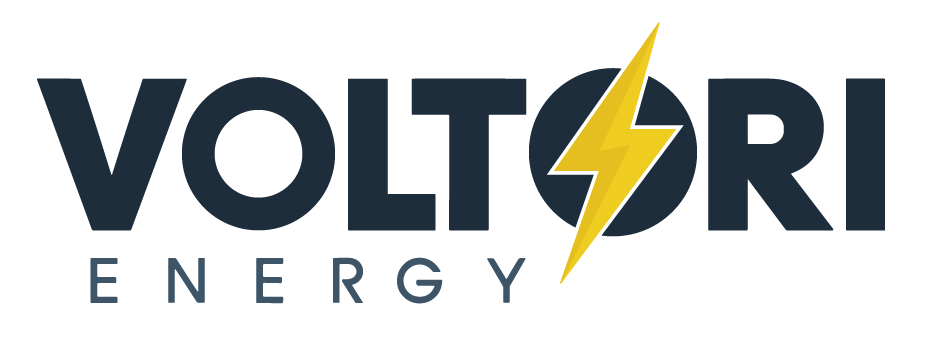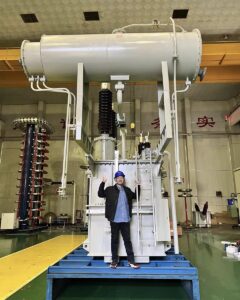Selecting the wrong impedance level for your power transformer can lead to catastrophic system failures, excessive voltage drops, or dangerous fault currents. Many engineers struggle with this critical specification without understanding its implications.
The ideal impedance level for a power transformer depends on its application and system requirements. For renewable energy applications, distribution transformers typically need 5-7.5% impedance, while larger power transformers work best with 7-10%. This balance optimizes protection, efficiency, and voltage regulation.
 impedance](https://voltoritransformer.com/wp-content/uploads/2025/09/image-1-power-transformer-impedance-measurement-s.png)
When I first joined Voltori Energy as Supply Chain Director, I quickly learned that transformer impedance isn't just another technical specification—it's a critical parameter that affects everything from system protection to long-term operational costs. Let me share what I've discovered about impedance selection, measurement, and its impacts on your power systems.
What Should Be the Impedance of a Transformer?
Selecting transformer impedance feels overwhelming when faced with conflicting priorities of fault current limitation, voltage regulation, and cost constraints. I've watched many engineers make costly mistakes here.
The optimal transformer impedance depends primarily on the application, system voltage, and expected fault conditions. For distribution transformers in renewable energy applications, we typically recommend 5-7.5% impedance, while larger power transformers benefit from 7-10% impedance values. These ranges provide adequate fault current limitation while maintaining acceptable voltage regulation.

From my experience managing supply chains for transformer manufacturers, I've observed that non-standard impedance values frequently cause headaches. They extend lead times and increase costs significantly. I always advise our clients at Voltori Energy to stick with standard impedance values unless absolutely necessary for their specific application.
When working with solar farm installations, we've consistently found that transformers with slightly higher impedance ratings (6-8%) provide better protection for expensive inverter equipment by limiting fault currents. This small adjustment has saved our clients significant repair and replacement costs when grid disturbances occur.
The impedance value also affects system stability. Too low, and fault currents become dangerous; too high, and you'll face voltage regulation issues. This balancing act requires careful consideration of:
| Impedance Level | Advantages | Disadvantages |
|---|---|---|
| Low (2-4%) | Better voltage regulation, Lower losses | Higher fault currents, Less protection |
| Medium (5-7%) | Good balance of protection and efficiency, Standard availability | Moderate voltage drop under load |
| High (8%+) | Excellent fault current limitation, Better protection | Higher losses, Poorer voltage regulation |
One challenge we regularly face at Voltori is balancing transformer cost against fault current requirements. Lower impedance units are typically less expensive to manufacture but may not provide adequate system protection. This cost-benefit analysis becomes especially important in large renewable installations with multiple transformers.
How Many Ohms Should a Transformer Read?
When commissioning new transformers, technicians often ask me this question, revealing confusion about impedance measurement that could lead to incorrect test procedures or misinterpretation of results.
Transformer impedance isn't typically expressed in ohms but as a percentage of the transformer's base impedance. This percentage value represents the voltage drop across the transformer when delivering full-rated current. For accurate measurements during testing, the actual impedance in ohms depends on the transformer's kVA rating and voltage class.
 setup](https://voltoritransformer.com/wp-content/uploads/2025/09/image-3-transformer-impedance-testing-procedure-s.png)
When clients ask about "how many ohms," I explain that percentage impedance is more meaningful for specification purposes. The actual ohm values primarily matter during testing and commissioning procedures. This distinction is crucial because comparing transformers of different sizes using ohm values alone can lead to incorrect conclusions.
The relationship between percentage impedance and actual ohms follows this formula:
Z(ohms) = (Z% × V² × 100) ÷ (kVA × 1000)
Where:
- Z% is the impedance percentage
- V is the rated voltage
- kVA is the transformer rating
For example, a 1000 kVA transformer with 5% impedance and 480V secondary would have:
Z(ohms) = (5 × 480² × 100) ÷ (1000 × 1000) = 0.1152 ohms
When testing transformers, we verify this impedance value through short-circuit tests. The relationship between measured values and nameplate specifications tells us whether the transformer will function properly within the system's protection scheme. I've seen cases where incorrect impedance measurements led to protection coordination failures that could have been avoided through proper testing.
What Happens If Transformer Impedance Is High?
I've witnessed several system integration projects fail because engineers underestimated the consequences of high transformer impedance, resulting in poor voltage regulation and system compatibility issues.
When transformer impedance is too high (generally above 10%), several significant operational issues emerge. Most notably, voltage regulation suffers—meaning the voltage drop from no-load to full-load conditions becomes excessive. This can cause equipment malfunction, especially in applications sensitive to voltage variations like variable frequency drives or precision electronics.
 high impedance effects](https://voltoritransformer.com/wp-content/uploads/2025/09/image-4-effects-of-high-transformer-impedance-sty.png)
High impedance transformers offer excellent fault current limitation, which seems advantageous at first glance. However, this comes with increased voltage regulation issues and efficiency losses. I've had numerous discussions with our engineering team about this trade-off when designing systems for wind farms and solar installations.
The higher impedance also means increased losses during normal operation, resulting in lower efficiency and higher operating costs over the transformer's lifetime. These losses manifest as heat, requiring better cooling systems and potentially shortening the transformer's operational life.
From a system perspective, excessively high impedance can create:
- Power quality issues, including voltage sags during motor starting
- Challenges with protection coordination
- Reduced ability to handle unbalanced loads
- Greater sensitivity to harmonic distortion
I've seen firsthand how improper impedance matching caused stability issues in wind farm installations. In one large project, the excessive voltage drop during peak production periods meant that some energy had to be curtailed—a costly outcome that could have been avoided with proper impedance selection.
What Does 5% Impedance Mean?
Many clients come to me confused about what 5% impedance actually represents, often mistakenly believing it relates to efficiency rather than understanding its true significance for system design and protection.
A transformer with 5% impedance means that applying 5% of the rated voltage to the primary winding (with the secondary shorted) will cause rated current to flow. This standardized way of expressing impedance helps engineers compare transformers and design protection systems without complex calculations.

The 5% impedance that's common in many distribution transformers represents a carefully calculated balance between cost, efficiency, and protection requirements. It has become something of an industry standard for many applications because it provides reasonable fault current limitation while maintaining good voltage regulation under normal conditions.
In practical terms, a 1000 kVA transformer with 5% impedance will limit a fault to approximately 20 times the rated current. This impedance value allows protection devices to operate properly while preventing catastrophic damage during short-circuit events.
This standard value also helps with:
| Benefit | Explanation |
|---|---|
| Protection coordination | Allows proper sizing of circuit breakers and fuses |
| Parallel operation | Transformers with matching impedance percentages can be paralleled more easily |
| Cost optimization | Manufacturers can standardize designs, reducing production costs |
| System stability | Provides predictable behavior during transient conditions |
When specifying transformers for our renewable energy clients at Voltori Energy, we typically recommend this standard 5% impedance for distribution transformers unless specific system conditions dictate otherwise. This recommendation comes from years of observing real-world performance and balancing competing system requirements.
Conclusion
Selecting the right transformer impedance requires balancing fault current limitation, voltage regulation, and system efficiency for your specific application. Understanding these trade-offs will help you make informed decisions that optimize performance and longevity. Trust Voltori Energy to deliver custom-engineered transformers with precisely calculated impedance values for your renewable energy projects.




